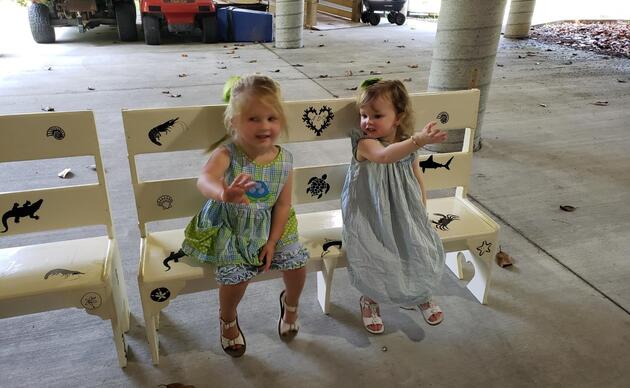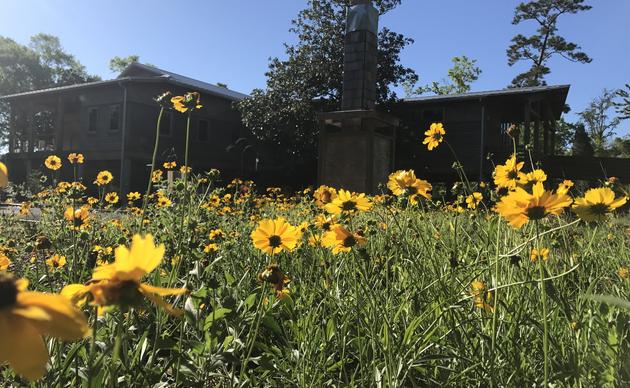The monarch migration has begun along the Gulf Coast! Monarch butterflies, born throughout Canada and the United States, migrate along an epic 3,000-mile round-trip journey each year. The Mississippi Gulf Coast provides not only important habitat for monarchs in search of milkweed for their eggs, but also nectaring grounds for monarchs that are en route to Mexico for the winter and heading northward again in the spring.
Monarchs at the Pascagoula River Audubon Center are also part of a continent-wide citizen science project. MonarchWatch, an organization in Kansas, oversees a database of monarch information from citizen scientists all over North America. Individual monarch butterflies are captured, identified as male or female, and tagged with a small sticker. The tag contains information about the MonarchWatch project and a 6-digit code unique to that particular butterfly.
Tagged monarchs that are collected or recaptured anywhere along their migration route provide critical information about the population. Tags don't harm the monarchs nor impede their flight, they simply provide a way to mark each butterfly. Unlike many other butterflies, monarch wings are not covered with powdery scales, and so handling them gently during the tagging process does not cause harm.
Monarch populations are in decline for several reasons- they are completely dependent on milkweed as a host plant for their eggs and larvae, and when milkweed diminishes for any reason along the monarch migration route, it impacts monarch survival. Adult monarchs can feed on the nectar of many different blooming flowers, including but not limited to milkweed. Monarchs, like other organisms with limited habitats, are also harmed by weather events and climate change in their wintering grounds. They gather in large numbers in the oyamel fir forests in the mountains near Mexico City, Mexico, where the temperatures stay cool and moist and the butterflies can spend much of the winter in a resting state.
If you would like to do something to support monarch populations anywhere along their migration route, plant milkweed and allow it to bloom and grow in yards, gardens, parks, schools, cemetaries, and public green spaces. Monarch caterpillars each require up to 20-25 milkweed leaves and blossoms during their short larval stage, so milkweed is critical! It's also helpful to plant a variety of spring and fall blooming flowers for the adult monarchs to use for fuel during migration. Flowers without pesticides are a better choice for all pollinators, and planting for monarchs also supports bees, other butterflies, and moths as well.
The most important thing you can do for monarchs though is to pay attention to and appreciate their amazing migration each year!
How you can help, right now
Support the Center with a donation
Support outdoor education and conservation along the Pascagoula River through a donation.
Volunteer With Us!
We need helpers in the gardens, at the front desk, and with educational programs. Contact us today for more information.




